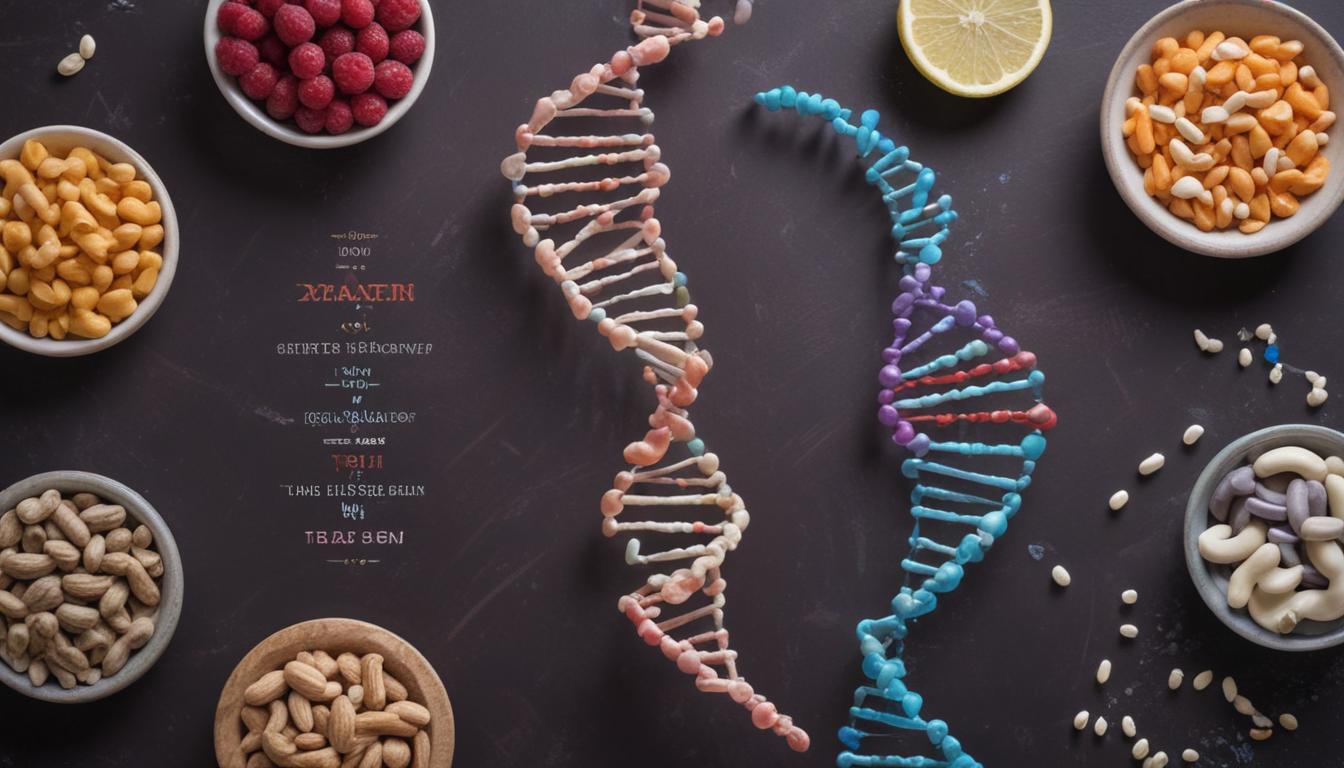Now Reading: Is Your Health in Your Genes?
- 01
Is Your Health in Your Genes?
Is Your Health in Your Genes?

Decoding Your DNA How Genetics Influence Your Health and What You Can Do About It
Have you ever felt like you are doing everything right but still not getting the results you want? You follow a strict diet, exercise regularly, and get enough sleep, yet you struggle with weight, energy levels, or persistent health issues that others seem to avoid easily. It can be incredibly frustrating to feel like your body is working against you, leaving you to wonder if there is a hidden factor at play. The truth is, there might be. Your unique genetic blueprint plays a significant role in how your body functions, but this is not a life sentence.
The solution is not to surrender to your genetic fate but to understand it. By learning about the role of genetics in your health, you can move away from generic, one-size-fits-all advice and toward a personalized approach that works with your body, not against it. Think of your DNA not as a rigid set of rules, but as a personalized roadmap. It can highlight potential challenges, reveal your unique strengths, and guide you toward the lifestyle, nutrition, and fitness choices that will help you thrive. This knowledge empowers you to take control of your wellbeing in a more precise and effective way.
The Foundation Your Genes and Your Health
Your body is made up of trillions of cells, and almost every one contains a complete set of instructions for making you who you are. This instruction manual is your DNA, which is organized into structures called chromosomes. Specific segments of this DNA are known as genes. These genes provide the code for building proteins, the essential molecules that carry out countless jobs within your body, from digesting food and fighting off infections to determining your eye color and height. When we talk about genetics and health, we are talking about how variations in these genes can influence your predisposition to certain conditions and traits.
It is important to understand that genes rarely act alone. While some rare diseases are caused by a mutation in a single gene (monogenic disorders), most common health conditions, like heart disease, type 2 diabetes, and obesity, are polygenic. This means they are influenced by a complex interplay of multiple genes, each contributing a small part to your overall risk. Your genetic makeup might make you more susceptible to high cholesterol or less efficient at processing certain nutrients, but it is not a guarantee of a specific health outcome. It simply provides the foundational context upon which your life is built.
Nature Meets Nurture The Powerful Partnership of Genes and Lifestyle
The long-debated question of “nature versus nurture” is a bit misleading when it comes to your health. The modern understanding is that it is not a battle but a partnership. Your genes (nature) may load the gun, but your environment and lifestyle choices (nurture) often pull the trigger. This interaction is the key to understanding how you can actively influence your health, regardless of the genetic hand you were dealt. You may have a genetic predisposition to weight gain, but a balanced diet and regular physical activity can significantly mitigate that risk.
This dynamic relationship is best explained by the fascinating field of epigenetics. Epigenetics refers to modifications to your DNA that do not change the DNA sequence itself but affect how your genes are expressed—whether they are turned “on” or “off.” Your lifestyle choices are powerful epigenetic modulators. A nutrient-rich diet, consistent exercise, stress management, and avoiding toxins can create positive epigenetic marks that promote the expression of protective genes. Conversely, a poor diet, chronic stress, and a sedentary lifestyle can switch on genes that may increase your risk for disease. This means you have a remarkable degree of influence over your genetic expression every single day.
Putting Genetic Knowledge into Action
Understanding your genetic predispositions can move you from a reactive to a proactive approach to your health. This knowledge becomes a powerful tool for personalizing your wellness strategy in several key areas.
Personalized Nutrition and Diet
Generic dietary advice often fails because it does not account for individual genetic differences. Genetic testing can reveal how your body is likely to process macronutrients like fats, carbohydrates, and proteins. For instance, some individuals have gene variants that make them more sensitive to the effects of saturated fats on cholesterol levels, while others can handle them better. Similarly, your genetics can influence your sensitivity to caffeine, your predisposition to lactose intolerance, or how efficiently your body converts and uses essential vitamins, such as folate. Armed with this information, you can tailor your diet to support your unique metabolic needs, optimizing energy levels and reducing your risk of diet-related health issues.
Tailored Fitness and Exercise
Just as with diet, there is no single exercise plan that is perfect for everyone. Your genes can influence your natural athletic abilities and how your body responds to different types of training. Some genetic profiles are associated with a greater capacity for endurance activities like long-distance running, while others are geared more toward power and strength, such as sprinting or weightlifting. Understanding your genetic makeup can help you choose a fitness routine that you are not only more likely to excel at but also one that will give you the most effective results for your effort. Furthermore, certain genetic markers can indicate a higher risk for soft tissue injuries, allowing you to incorporate more targeted stretching and recovery protocols to keep you safe and active.
Proactive Health Screening and Prevention
Perhaps one of the most significant benefits of understanding your genetics is in the realm of preventative health. Knowing that you have a higher-than-average genetic risk for a condition like heart disease, certain types of cancer, or osteoporosis does not mean you are destined to develop it. Instead, it serves as an early warning system. This knowledge allows you and your healthcare provider to be more vigilant. You might start certain health screenings earlier or have them more frequently than general guidelines suggest. It empowers you to focus your preventative efforts where they matter most, giving you a crucial advantage in maintaining long-term health and catching potential problems at their earliest, most treatable stages.


































